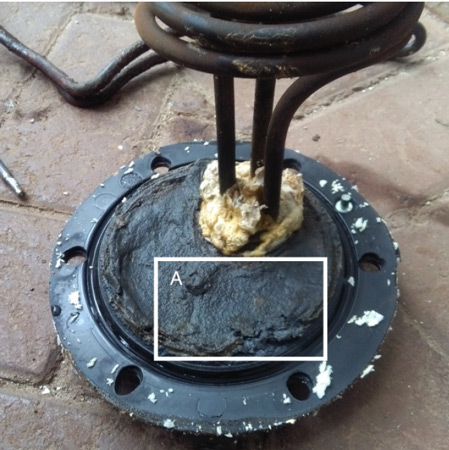/tldr: the water cylinder is probably less important than the pipes. Likely more useful steps: heat the water in whatever source cylinder once a day to above 50-60°C, if particularly cautious do this heating closer to the time that the water will be used, allow the water to run for a minute or two before use and if extra, extra cautious don’t take a 30 minute shower and if extra, extra, extra cautious turn of the shower tap in between lathering etc. I am not paying anyone’s medical/funeral bills.
Caveat - I am not a Microbiologist, or any of the ologists.
Others are better suited to answer, and have actually done so, the technicalities of the proposed system. My perspective is more around the perceived risk that Legionella actually has in a residential water system and whether any extra steps are required.
As you indicated Legionella is likely in the water in any case and most people seem to focus on the geyser/hot water cylinder as an incubator for further multiplication. Some folks at US did a bit of research and found Legionella even very close to the element in an electric element geyser.

Combining quantification of Legionella in five real world geysers with computational fluid dynamics, that simulate temperature stratification to evaluate whether an environment that is conducive to the growth of Legionella exists, they developed an infection model to determine whether infection is likely.
Two of their conclusions stand out for me
the infection model seems to indicate that Legionellosis from single household plumbing systems is unlikely except in the case of immunocompromised individuals.
and
the CFD model- and biological-results presents a strong case for the growth of Legionella in piping systems downstream of the water heater
*emphasis my own
With regard to the first highlighted conclusion, developing Legionnaires Disease from Legionella requires 4 things
(i) presence of a virulent strain in a water source (or soil in the case of L. longbeachae), (ii) means for dissemination (aerosolisation) of the bacteria, (iii) environmental conditions allowing the survival an inhalation of an infectious dose of the bacteria, (iv) a susceptible host
So, (the correct variant of) Legionella must be present, and you must inhale enough of it while having an immune system that might struggle to fight off the infection. Point 4 seems particularly relevant - so if a transplant recipient for instance, or underlying chronic medical condition, or really old/infirm more caution is advisable.
With regard to the second highlighted conclusion, these folks even found some Legionella in low flow shower heads. I will wager that throughout South Africa, during summer, most water pipes in the roof space of houses will likely provide a better environment for Legionella to thrive than the geyser (which through periodic very high temperatures will have a partial sterilization effect).
So, why do we not have many more reported cases of Legionella related illness? Between 1 January 2018 and 30 September 2020 the NICD were notified of (only?) 93 cases of Legionellosis in South Africa. One reason will be that it is under reported for reasons like low surveillance and patients inadvertently being treated for something else (like TB) that also treated the Legionella related Pneumonia.
A fairly recent study of a sample of high-rise buildings in Hillbrow (!) found Legionella in 31 of 67 samples taken from 15 different buildings. If the Legionella related infection rate was truly problematic I suspect there would have been some TikTok videos by now of 10’s-100’s of people dying (yeah absence of evidence and all that…). It is possible that these buildings contain mostly baths and not showers (aerosolisation is way more likely during a shower).
Another reason is possibly that water system related incidence of Legionella related infection is actually quite low (like the Stellenbosch model suggests). This, I speculate, might partially be understood in how most people are likely to approach a shower. I suspect most people will have the water running for a while before jumping in the shower. The Stellenbosch folks found that the water from the hot water tap contained more Legionella initially than when the water had run for a while - thereby (my hypothesis) reducing the likelihood of being exposed to a high enough dose of Legionella to be a problem for most healthy individuals as most of the “free floating” Legionella is flushed from the pipe before exposure.
So, unless falling in a very high risk group, and/or wanting to boil the water for other possible Pathogens I think extra steps/costs specifically focussed on Legionella are not needed in a single family type residential setting.
